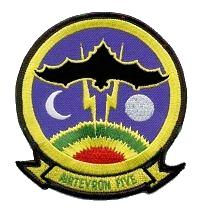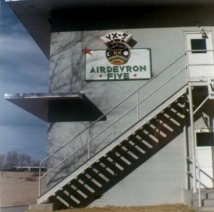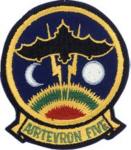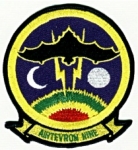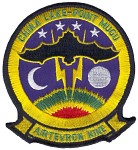|
|
|
|
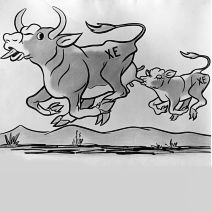 |
| Airtevron Five Patch from Gary Verver |
Airdevron Five Barracks Photo from Ken Savage |
Air-to-air refueling Photo from Tom Scott |
|
Air Development Squadron FIVE (VX-5), was commissioned on 18 June 1951 at NAS Moffett Field, California, with 15 officers, 100 enlisted men, and nine AD Skyraider aircraft. The Squadron, under the operational control of Commander, Operational Development Force, now Commander Operational Test and Evaluation Force (COMOPTEVFOR), was assigned to develop and evaluate aircraft tactics and techniques for delivery of airborne special weapons. Over the years, VX-5 has maintained numerous detachments around the U.S. to take full advantage of the variety and diversity of facilities available, and to help keep the Squadron abreast of the latest fleet tactics. These detachments have included NAS Oceana, VA; Naval Weapons Evaluation Facility, Albuquerque, NM; NAS Whidbey Island, WA; and NAS Sanford, FL. In July 1956 VX-5 moved to the Naval Air Facility, China Lake, CA, because of the availability of vastly improved ranges and instrumentation facilities. In January of 1985, the VX-5 Detachment at Whidbey Island, which oversaw developments relating to the EA-6B weapon system, was relocated to China Lake. Since then, temporary detachments have been made nationwide from Alaska to Florida, as required to test airborne weapons in a variety of conditions. To keep pace with the changes and improvements in Navy weapon systems since VX-5's commissioning, the Squadrons mission has evolved over the years to include independent operational test and evaluation of all air-dropped munitions destined for use in the attack role by the Fleet and Marine Corps; development of initial tactics to be employed with new weapon systems; and incorporation of electronic warfare advances into the self-defense capability of attack aircraft. In June 1993, the CNO directed the consolidation of VX-4 and VX-5 into a single operational test and evaluation squadron designated as VX-9, with a permanent F-14 Detachment located at Point Mugu, CA. This initiative was launched as part of the "right-sizing" of our Naval Forces in the aftermath of the Cold War. |
Squadron Patch:
|
|
|
|
|
| Airdevron 5 | Airtevron 5 Patch from G. Verver |
Airtevron 9 Patch from G. Verver |
Airtevron 9 Patch from G. Verver |
Back to Table of ContentsHandle:
Back to Table of ContentsVX-5 Vampires History:
Back to Table of ContentsVX-5 & VX-9 Commanding Officers:
Back to Table of ContentsEvents:
Awards:
|
